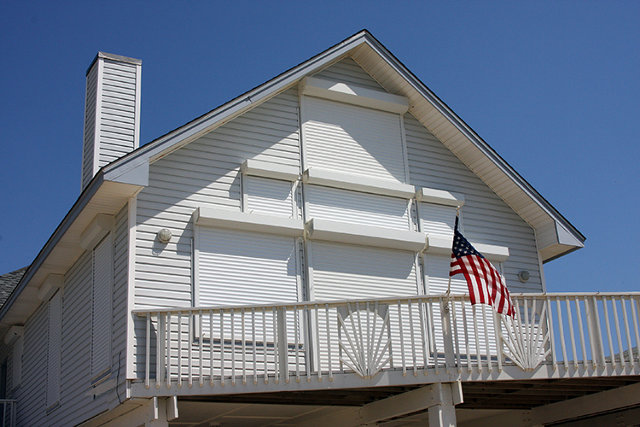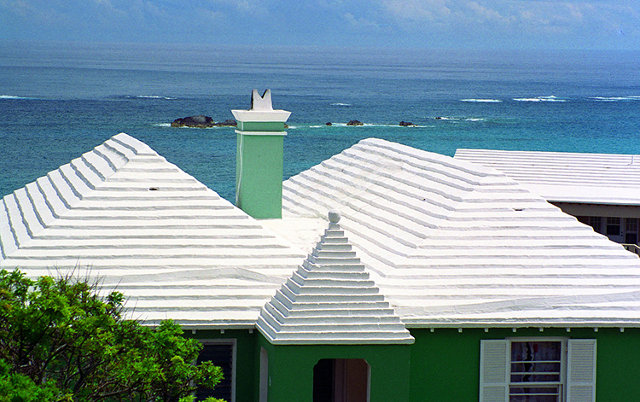Is It Even Possible To Design
Buildings That Can Withstand 250 MPH Typhoon Winds?
TECHNICALLY? YES. BUT AS WE FOUND OUT WHEN WE TALKED TO THREE EXPERT ARCHITECTS AND BUILDING SCIENTISTS, THE ANSWER ISN'T THAT SIMPLE.
In the tragic wake of Typhoon Haiyan, which has killed over 2,000 people (and counting) and has destroyed entire coastal villages in the Philippines, the conversation inevitably turns to prevention. How can we avoid such wide-scale disaster in the future?
Architects and designers are left to address some important questions in the aftermath: Can they design buildings to survive the increasingly strong storms packing winds as forceful as Haiyan and as the tornadoes leveling cities like Joplin, Missouri? What architectural innovations could save lives in the future? And are these interventions even affordable?
Co.Design spoke with experts on building science, disaster prevention, and resilient design about whether it's possible to build towns and cities capable of withstanding winds upwards of 250 mph.
Alex Wilson, President, Resilient Design Institute
It is possible to design buildings to withstand 250 mph winds. You can buy tornado doors that are rated to 300 mph, but those are very expensive. Thick, laminated, and reinforced glass is available that can withstand 250 mph wind, but again, cost is a major issue.
It is possible to design buildings to withstand 250 mph winds. You can buy tornado doors that are rated to 300 mph, but those are very expensive. Thick, laminated, and reinforced glass is available that can withstand 250 mph wind, but again, cost is a major issue.
Some construction systems are far more wind-resilient than others. To minimize wind damage, the following strategies can be employed: hip roofs offer much less wind resistance than gable roofs; metal tie-down (hurricane) straps that tie the roof structure all the way down to the foundation and various structural connectors can dramatically reduce uplift, which is the cause of the most significant roof damage in hurricanes; hurricane shutters can protect windows from most wind-blown debris; roof overhangs should be limited to about 20 inches or designed to break-away (a relatively new idea I just came across). In general the strongest construction systems are reinforced concrete, as can be achieved with insulated concrete forms or ICFs.

Unfortunately, buildings designed to withstand 250 mph wind would be priced out of the income range of most people--especially those in the most vulnerable regions, such as the Philippines. In general, design for such extreme wind resistance can only be justified for emergency management buildings and buildings in extreme environments, such as research stations on Antarctica. Even the most stringent building code in the U.S., the Miami-Dade County code, assumes a design wind speed of only 146 mph.
That said, even designing buildings to withstand 140 or 150 mph winds would be a huge step up from conventional practice today. I have long advocated extending wind provisions of the Miami-Dade County hurricane code to much of the U.S.
Henry L. Green, Hon. AIA, President, National Institute of Building Sciences
Theoretically, it is possible to build structures to withstand such extreme wind events. However, there are a variety of concerns about taking such an approach in response to the rebuilding of an area devastated by this type of event. Naturally, cost is probably the most prohibitive factor. Additionally, the frequency of such events and the likelihood that they will occur in a particular region is limited, so the level of risk is insufficient to warrant such an investment. Other competing interests including the affordability of housing and availability of resources/sustainability are likely to influence the decision on whether to require building to such levels.

Within a community, building codes should serve as the baseline for acceptable levels of risk and how structures should be designed and constructed to withstand an event that could occur at a pre-determined frequency or at a particular level of severity. In the U.S., the strictest requirement for wind events along the coast requires resistance to 130-mph winds. Tornados have similar requirements to withstand 110-mph winds. FEMA’s approach to tornados of greater than 110 mph is to suggest the use of storm shelters/safe rooms. While such extreme events currently occur very infrequently, should they become more frequent due to climate change, prevailing design criteria may need to be re-examined.
Michael Lingerfelt, Chairman of the AIA’s National Disaster Assistance Committee
It is possible to build to resist strong winds. One thing you can do is design a safe room within your home as a place for you and your family to go during a storm and be safe. It might look like a pantry or a closet during normal operation, but in the case of high-strength winds, you go in and you’re safe. It doesn’t need to look like a bunker, but you need to be careful to design it so that it stays in place and is impregnable for airborne debris flying around.FEMA has guidelines for such safe rooms.
It is possible to build to resist strong winds. One thing you can do is design a safe room within your home as a place for you and your family to go during a storm and be safe. It might look like a pantry or a closet during normal operation, but in the case of high-strength winds, you go in and you’re safe. It doesn’t need to look like a bunker, but you need to be careful to design it so that it stays in place and is impregnable for airborne debris flying around.FEMA has guidelines for such safe rooms.

Garage doors are usually the first things to fail, so to build resiliently, you can add box beams that will reinforce them. Any hole in that wall is going to cause negative pressure on both sides, which will make the home explode from within.
If you’re in a hurricane zone, having a door that swings in instead of out is one of your weak spots. If your front door swung out, your home would be more resilient. I live in hurricane Florida, so one thing we try to stress is designing roofs in a manner that creates an airflow--it might be sloped on four sides like a milk carton. High winds usually peel a roof off like a can opener. Airflow prevents this.
In terms of affordability, there have been studies showing that somewhere around $2,000 can make your home more resilient--that’s less than your granite countertop--so is it affordable? Yes, but you have to put your money in strategic locations. FEMA will tell you that for $1 spent in mitigation, it saves the Federal Government $4. That has nothing to do with your insurance, or community-based funds. When you sit down and say, if I spend $1 of mitigation I’ll at least save the federal government $4 and I might save my life, you realize it’s worth it.
[Image: Flickr user Mansunides]
No comments:
Post a Comment